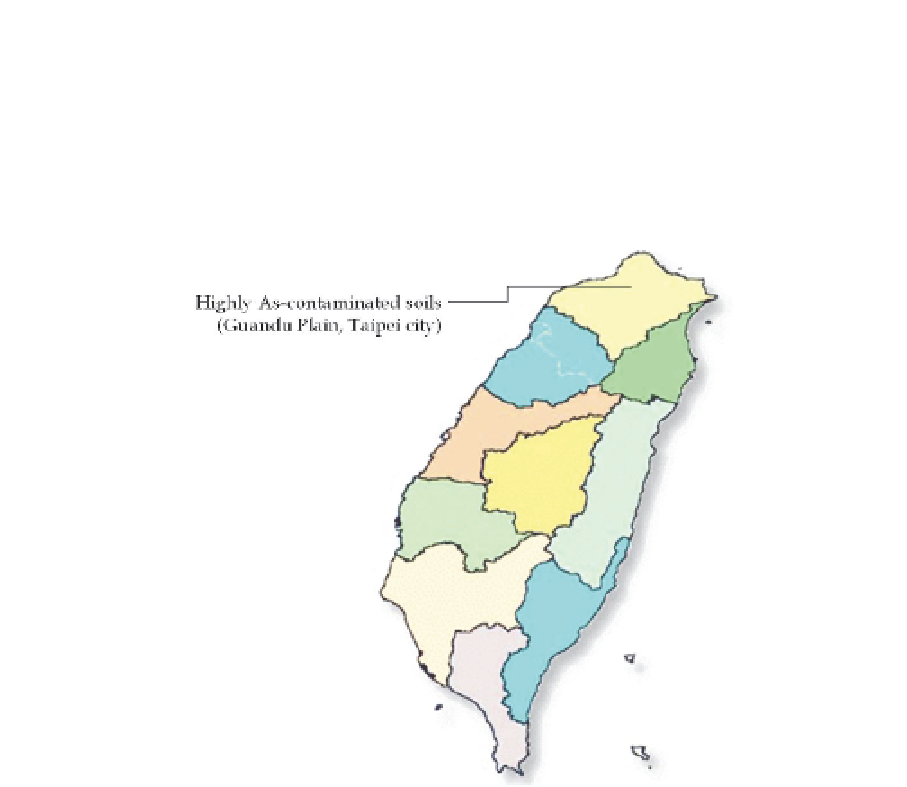Agriculture Reference
In-Depth Information
8. Uptake characteristics of two rice varieties growing in highly As-
contaminated soils
In 2007, thirteen topsoil (0-15 cm) and rice (
Oryza sativa
L.) samples were collected together
in 13 paddy fields (Fig. 5) with various levels of total As, ranging from 12 to 535 mg kg
-1
, in
soil according to previous survey. Two Japonica rice cultivars, Taikeng No. 8 and Tainan
No. 11, were planted in the 13 paddy fields. The 13 collected soil samples were acidic (pH
4.6-5.9) and fine textured (clay content 38-58%).
Fig. 5. Map of Taiwan and location where As-contaminated soil samples were collected (Su
& Chen, 2008).
Although total soil As concentrations varied widely from 12.4 to 535 mg kg
-1
, As
concentrations in brown rice were all below 0.35 mg kg
-1
DW and no adverse effects were
shown on rice growth (Fig. 6). The Standards for the Tolerance of HMs in rice enacted in
Taiwan does not include As. According to the statutory limits of As concentration in cereals
or food crops constructed in different countries, the rice harvested from the As-
contaminated soils in Guandu Plain was still safe for consumers.
Zavala & Duxbury (2007) suggested a global “normal” range of As concentration in rice as
0.08-0.20 mg kg
-1
, according to the combination of data set (n = 411) from their study and
literatures. They also found that As levels in rice produced from Asia were significantly
lower than that from U.S. or EU (Table 9). The As concentration in the majority of rice
samples from Asia were lower than 0.098 mg kg
-1
. Compared with their findings, the As
levels in rice grain produced in Guandu Plain were higher than the suggested global normal
range even though they did not exceed the statutory limits. However, a pot experiment
conducted in Taiwan also showed that As concentrations in brown rice ranged from 0.1 mg
kg
-1
to as high as 0.4 mg kg
-1
, even the rice was cultivated in soils not seriously contaminated

